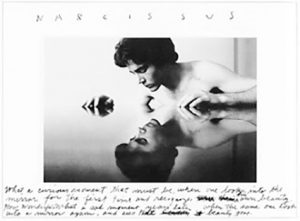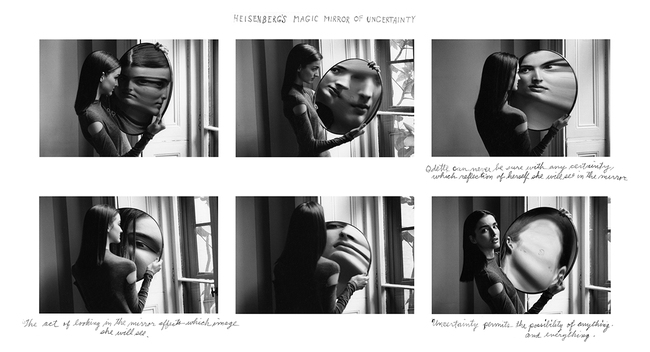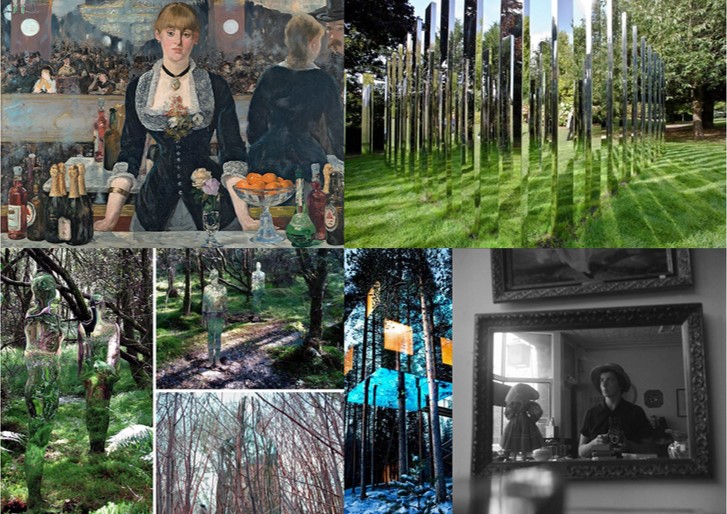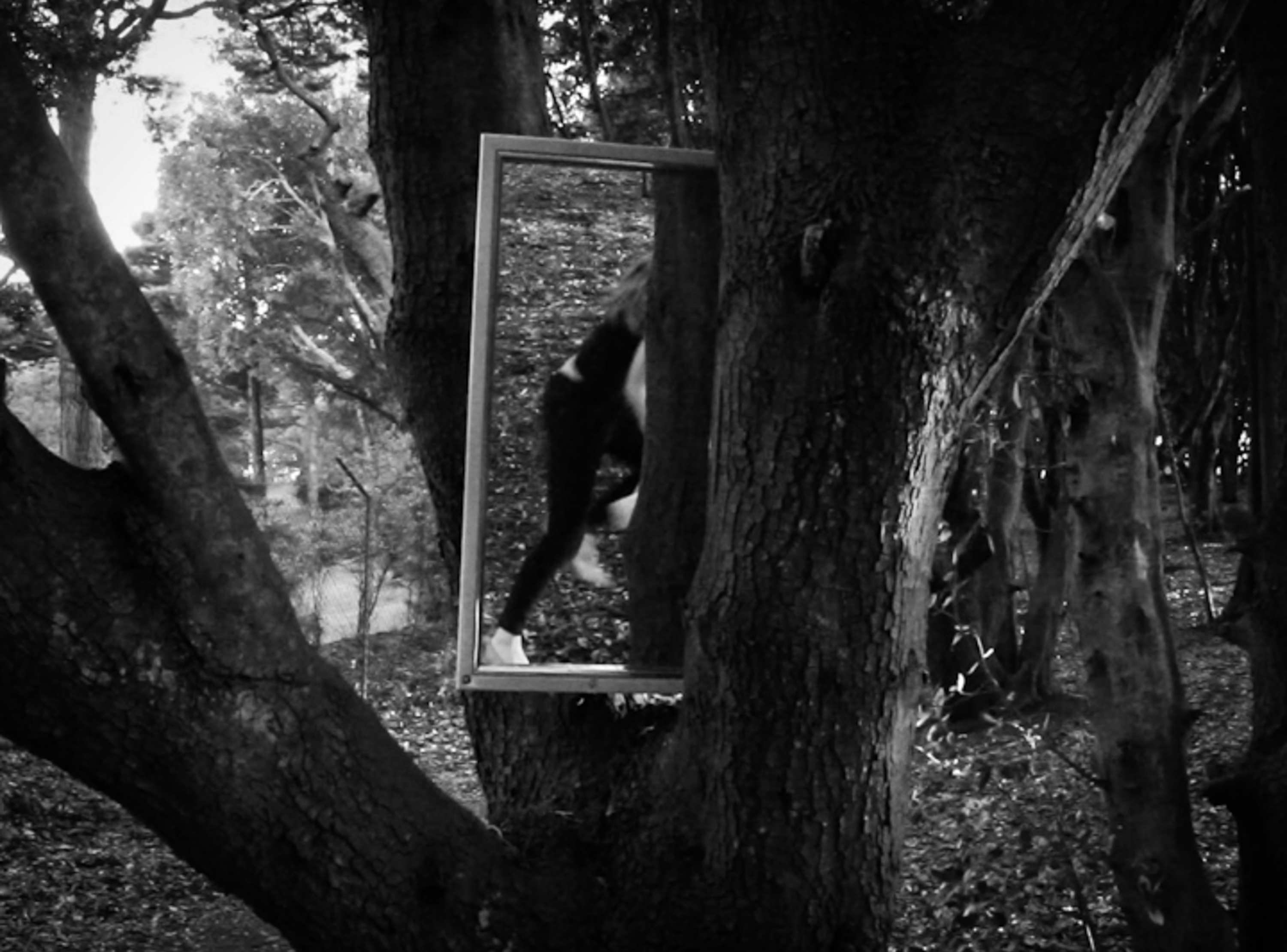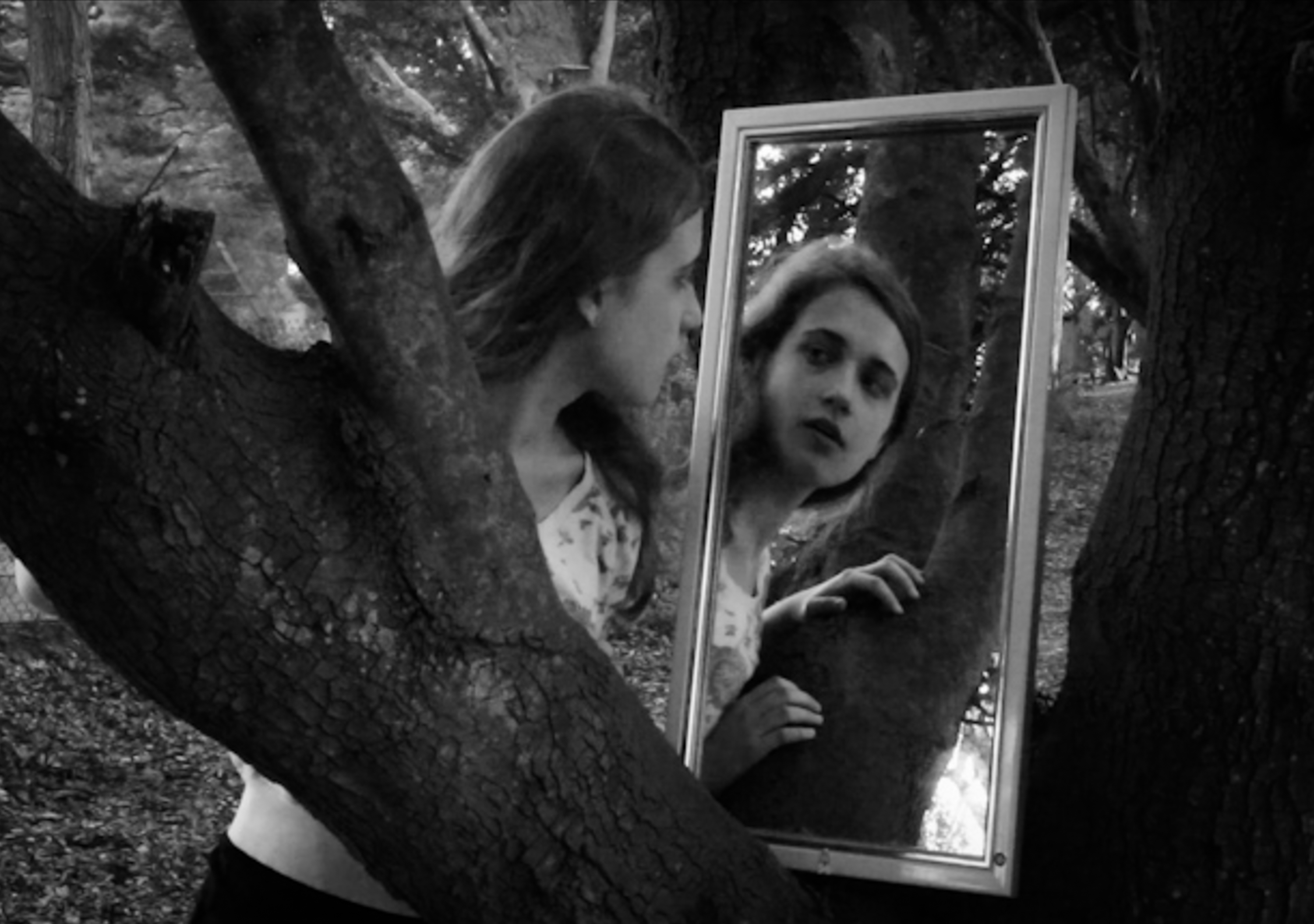At the start of this project I came up with many different ways in which I could potentially approach the theme of ‘Environment’ and it being such a broad area it took me a while to decide on the investigation that I was going to sustain. As an initial response I explored the environment of the Jersey Animals Shelter in a documentary style inspired by artists such as Raymond Meeks. I also became interested in performance art after attending a talk by the Australian artist Clare Rae who explores representations of the female body in connection to physical environments. I researched other female performance artists such as Claude Cahun and Francesca Woodman and explored the different styles and meaning behind their work. Interestingly all of these artists use mirrors in their work and this is something I wanted to explore. I initially considered using a mirror in my work as a continuation of the project I investigated for my Personal Study. In the Pitt Street buildings, in which the project was based, an old envelop with a photograph of the past owner was found behind a mirror. I considered using this mirror as a prop when photographing the buildings but unfortunately this wasn’t feasible because of the current restoration work taking place, however I am still hoping there could be a possibility to explore this at a more suitable time out of school. In any case this made me interested in the history of mirrors and their purpose within a domestic environment as well as literary and artistic ideas associated with them. My contextual studies into the use of mirrors in art history and the contemporary use of mirrors in relation to the notion of the ‘gaze’ proved to be very valuable and was the principle reason for my decision to explore these ideas as the main body of work for this project.
In my initial specification I explained that I was going to explore human relationships to environments using elements of performance. This was partly inspired by my research into the Earth Art movement with the idea of human interconnectedness to the natural world. I took inspiration from this with the idea of spontaneous exploration and using the surrounding environment to create art works. I researched specific artists associated with this such as Andy Goldsworthy and Robert Smithson (significantly his ‘Yucatan Mirror Displacements’ which involved placing mirrors in natural landscapes and using the reflections to refract the surrounding environments). Originally I was planning to explore Earth art in more depth focusing on objects found within environments and considering the sub-theme of abandonment but I later decided that I wanted to focus on the use of reflections and performance. Another thing I had planned to explore was video/stop frame animation and it’s a shame that I didn’t have time to do this but instead I decided to dedicate my time to creating a handmade book which was partly inspired by the work of Duan Michals and his use of series as well as the handmade elements to his work which make it more personal.
In addition to my handmade photo-book as I final outcome I have also made a selection of prints. I am going to present these first five images in A3 and display the colour ones on foam boards and the black and white ones in black window mounts.
I chose this image because I like it’s simplicity and the stream of light from the mirror on the ground and how the shape of her shadow follows this, leading the eye to the outer corners.

I like this image because of the chiaroscuro effect created by the combination of light and shadow. I also think the position of her arm is effective because it frames her face and leads the viewer’s eye around the image. She also stands out well against the dark background which contrasts with the paleness of her skin.

I selected this image because I like how the subjects silhouette is visible through the curtain. I think the juxtaposition between the eeriness of the shadowed hands and the flowers creates an unusual contrast. The use of the shadow also has a mysterious, unknown quality and could reflect the different sides of people with the surface view of the flowers concealing the deeper energies beneath. 
I have included this image in my final outcomes because I like the ambiguous nature created by the fact that my face is concealed. This has connections to the photography of artists such as Francesca Woodman in the way that her work considers the relationship between observation, self-display and mystery. The environment its self is also visually appealing with the dramatic sky and broken rocks. I also like the way that my arms follow the shape of the mirror in this image and the roundness could reference the form of the moon or sun. The mirror fragments the environment and the fact that it is pointing towards the sky also creates an an optimistic tone.

I chose this photograph because as with some of my other final outcomes it has an enigmatic quality and relates to the idea of exploring the human connection to the environment with the shadow of my body blending into the form of the tree. The shadow was created by natural back lighting and I adjusted the image to black and white in order to emphasize the contrast between the light and dark tones and make it more dramatic.

This is a group of five images which I am going to present in a series. They will be printed in a small size (A6) and displayed in a black window mount. Below is a mock-up I made in Photoshop to show the order in which I am going to sequence them. I chose to have three black and white ones, split up by two colour ones. In each of these images it is myself who is the subject and in many I wore plain black which could allude to the costume of mime artists which relates to the idea of performance. The photographs were taken in a range of environments and illustrate some of the different uses of reflections as well as demonstrating other techniques such as long shutter speeds to capture movement. I also selected these because the compositions are effective in each individual images for example I like the converging lines of light and shadow in the second image and how the cave entrance acts as a frame in the last.
 I am going to present the following two images in A4, displayed in a Typtic window mount. I am presenting these together because I like the combination of a close-up portrait shot and more of a landscape photograph. I chose the first picture because I like the effect of the raindrops on the mirror and I think the position I chose also works well because the fact that I’m crouching down means I’m inside the mirror and have fitted myself to it. The dark background is also effective because it contrasts with the white of my shirt and the mirror frame. I chose the second image because I like how small the human figure seems compared to the environment and the dramatic nature of the cliffs.
I am going to present the following two images in A4, displayed in a Typtic window mount. I am presenting these together because I like the combination of a close-up portrait shot and more of a landscape photograph. I chose the first picture because I like the effect of the raindrops on the mirror and I think the position I chose also works well because the fact that I’m crouching down means I’m inside the mirror and have fitted myself to it. The dark background is also effective because it contrasts with the white of my shirt and the mirror frame. I chose the second image because I like how small the human figure seems compared to the environment and the dramatic nature of the cliffs.


Similarly I am going to present these images in Typtic window mount and there is the use of a close-up and long-shot. I chose the first picture as it is one of my favorite outcomes with the mirror because of the composition and way that her eyes meet in the reflection which creates an interesting interaction. I chose the second because I like how the path leads the eye to the granite doorway and how the human subject stands out against the black. The fact that my face can’t been seen once again relates to the ambiguous element which is a pattern in my work.


Lastly I am going to print this picture in A4 and display it on a foam board. I think the lack of human presence works well in this image and I wanted to include an example which utilizes the mirror to create a landscape rather than portrait outcome. This relates more to the Earth Artists which influenced my work such as Robert Smithson’s use of reflections within natural environments. I like the way that the mirror creates an unusual perspective by refracting the environment so that the viewer has to stop and think about how it works. I also like the vibrant colours and clarity which is appealing and the depth of field meaning the grass is out of focus and the tree in the mirror is clear.




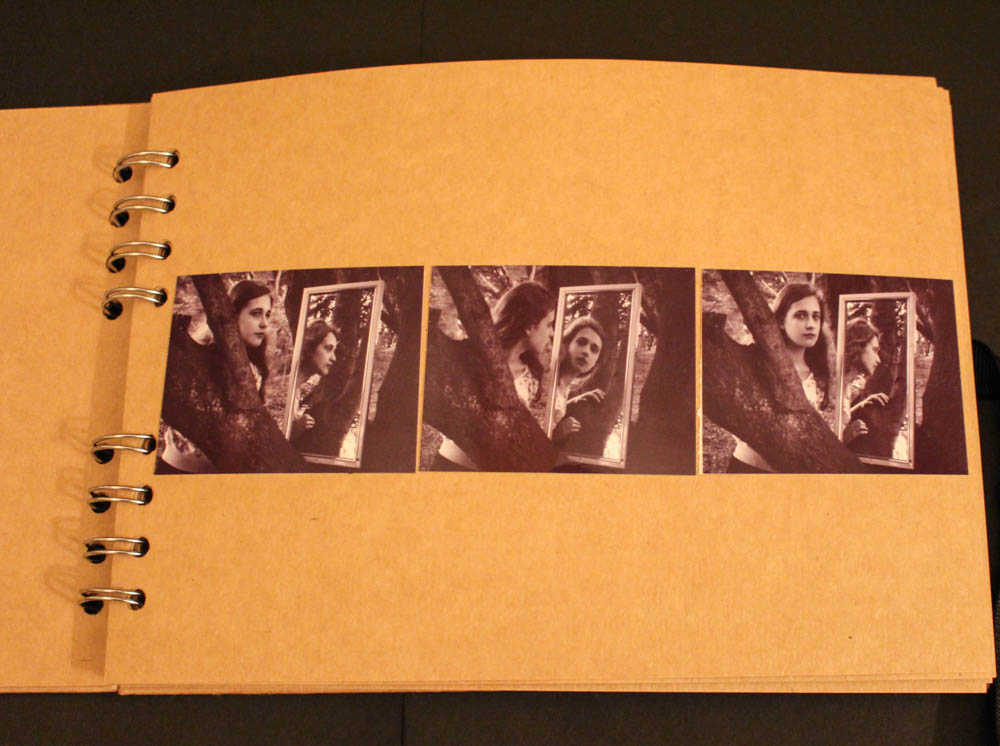




























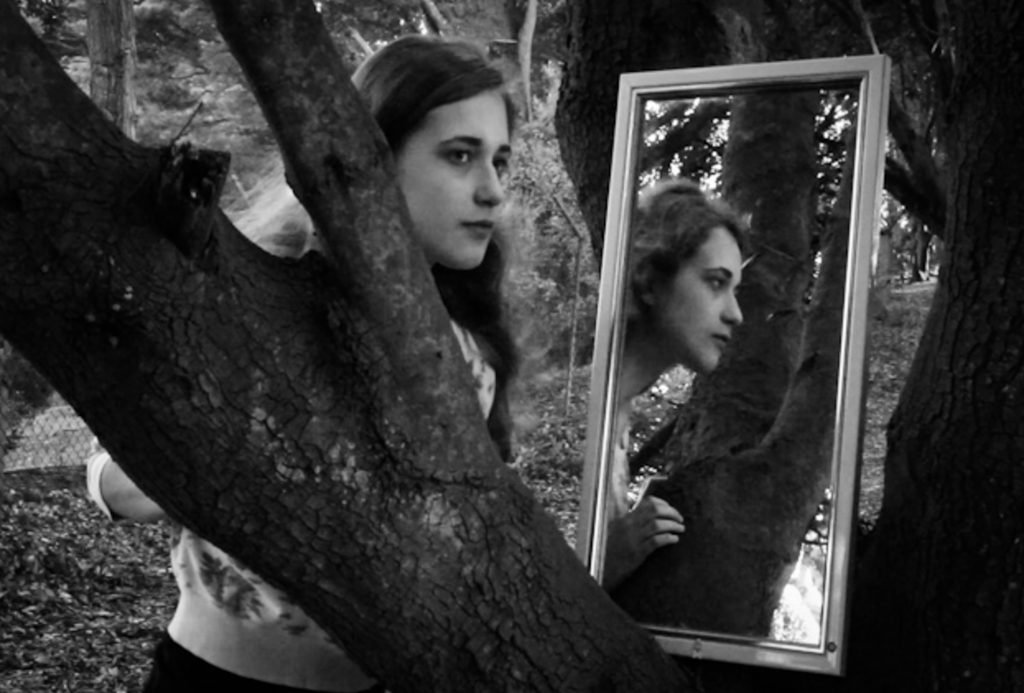









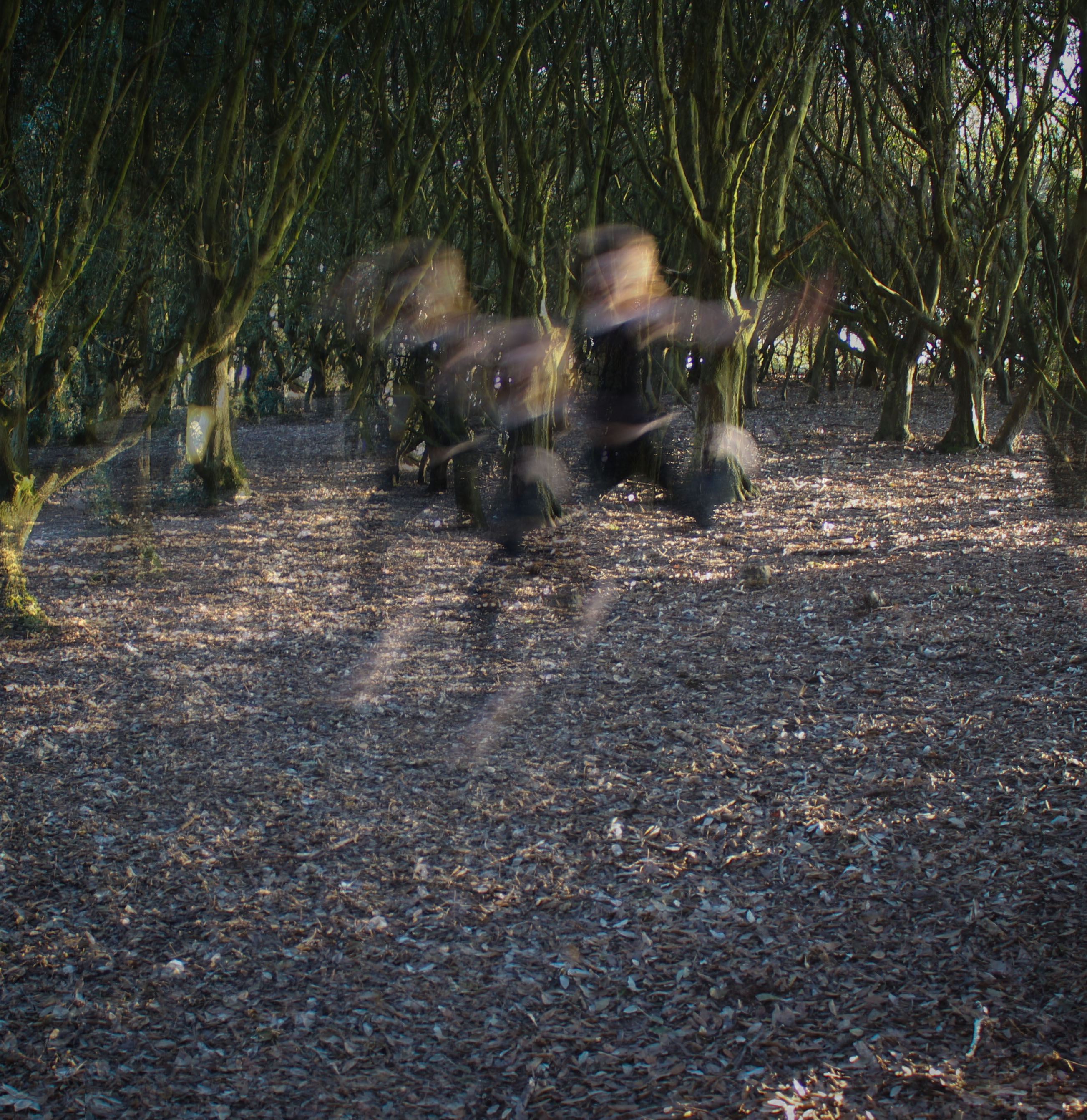

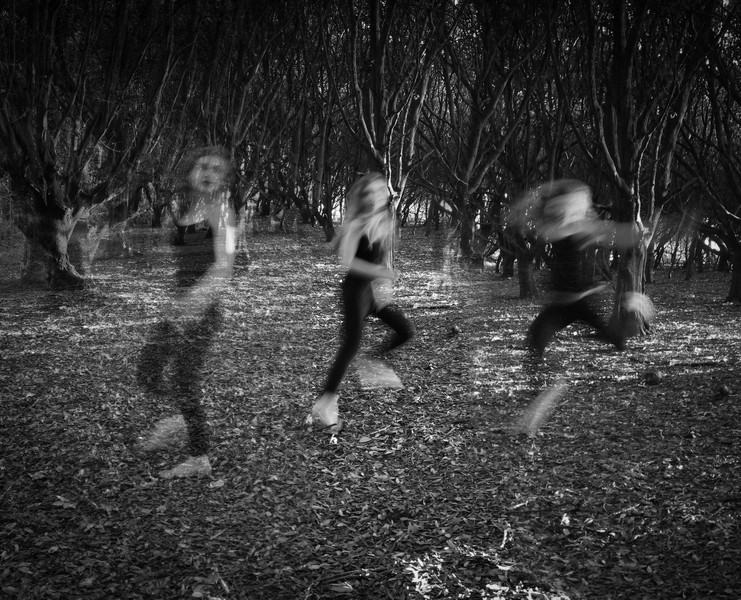






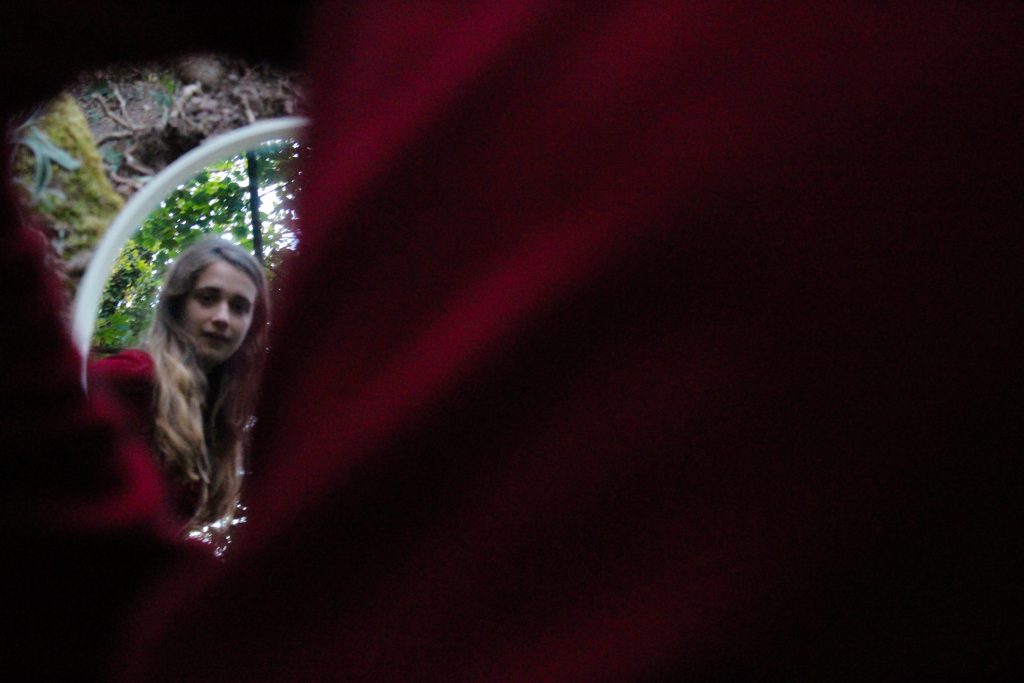

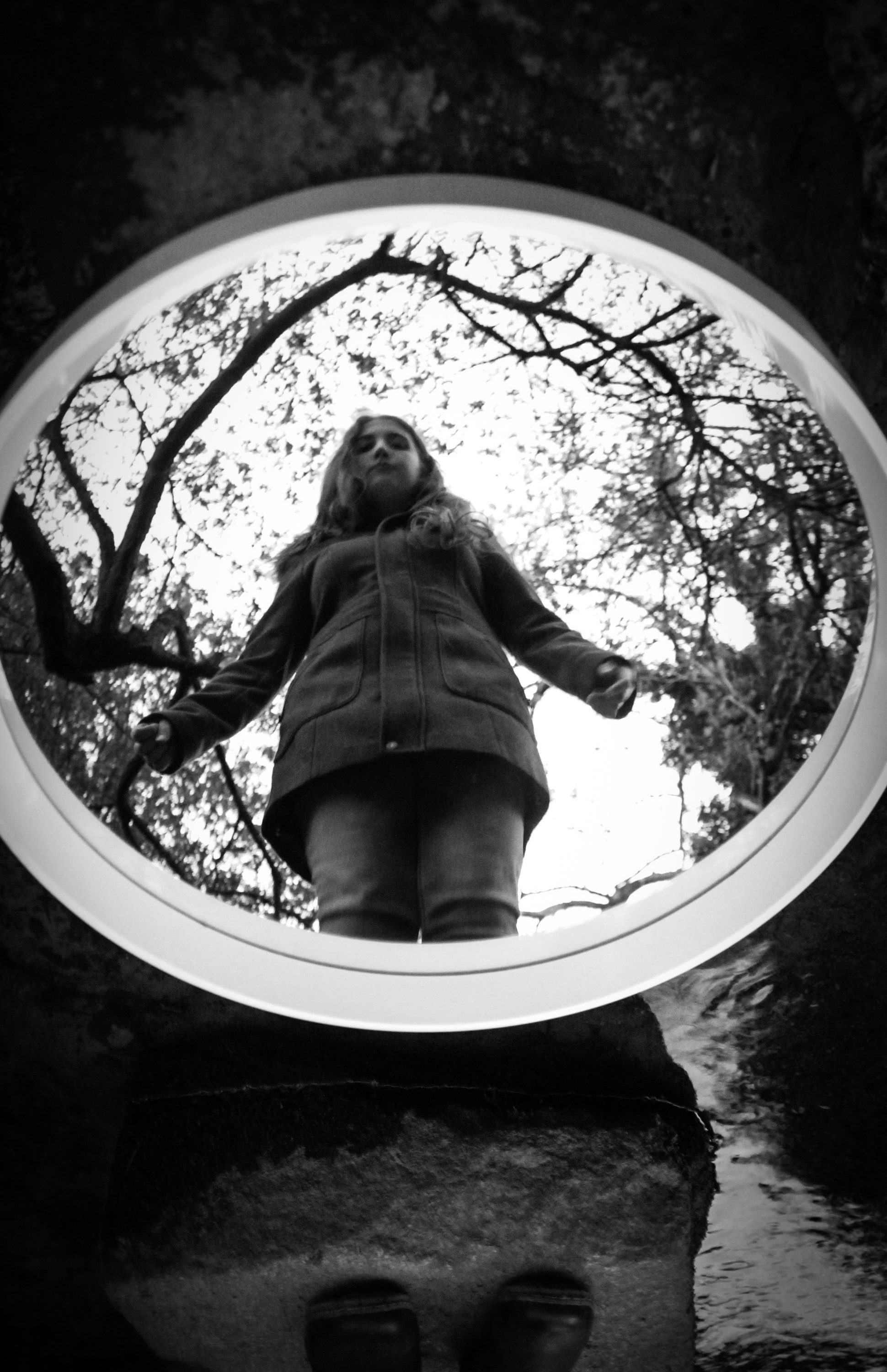
















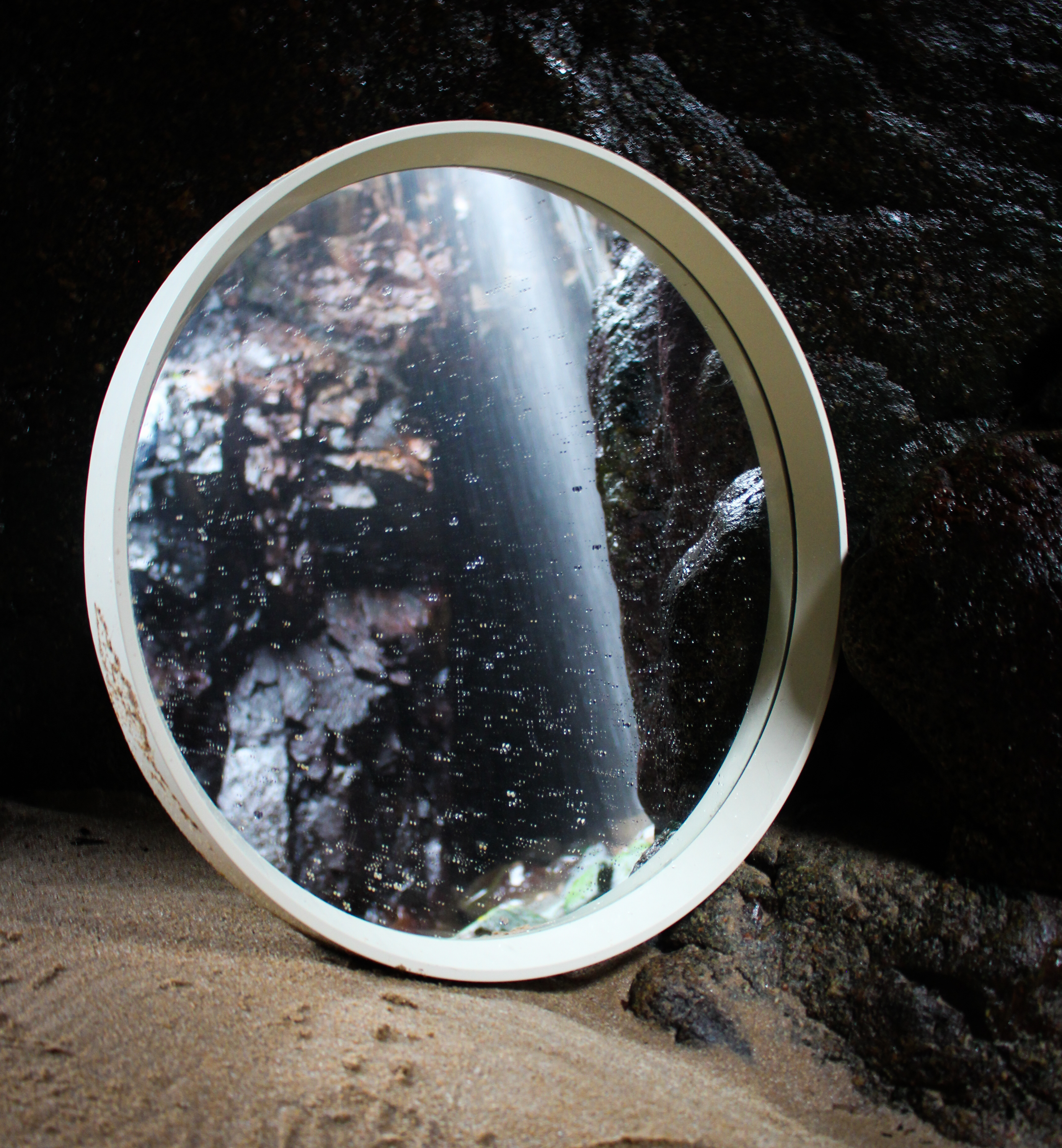

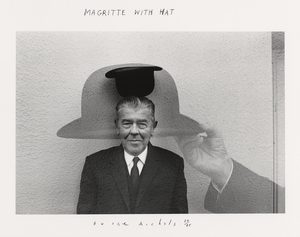
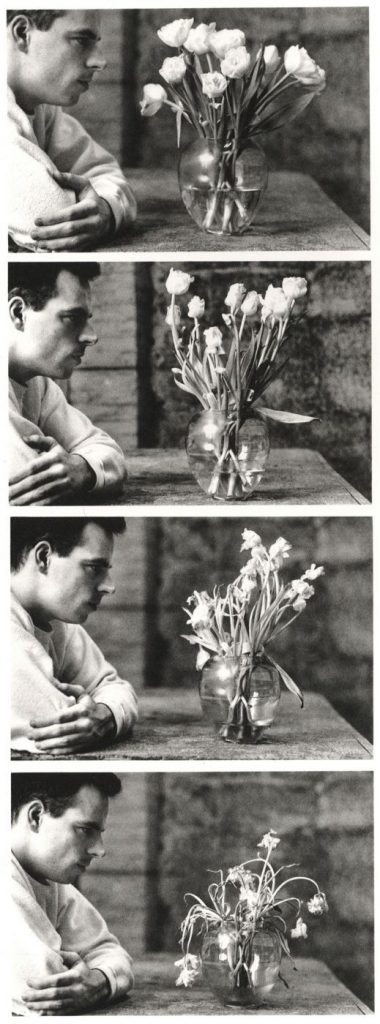
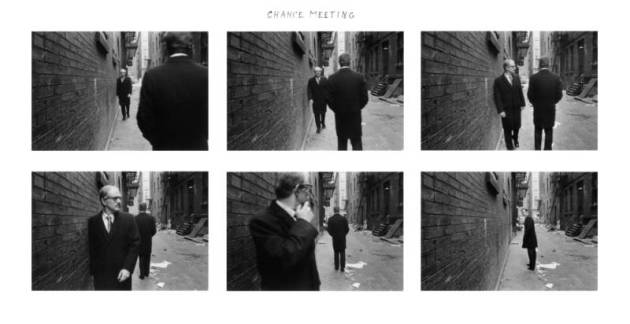 I was also drawn to Michal’s work because of the ways in which he has used reflections. He has explored the idea of mistrusting appearances and the truths that lie beyond the surface. Like mirrors cameras recreate a chosen subject ‘truthfully’ onto a flat surface by redirecting beams of light. Michals has stressed his suspicion of the purely visual to the extent of even abandoning the lens-based image in favour of purely verbal description. He has said ” I am a reflection photographing other reflections within a reflection” which suggests an unease with the process of trying to trap appearances. His work focuses on exploring invisible and internal themes and his use of mirrors could relate to the introspective nature of his work. He also connects his work on this to things such as mythology and literacy such as the example below which references the Greek myth of Narcissus.
I was also drawn to Michal’s work because of the ways in which he has used reflections. He has explored the idea of mistrusting appearances and the truths that lie beyond the surface. Like mirrors cameras recreate a chosen subject ‘truthfully’ onto a flat surface by redirecting beams of light. Michals has stressed his suspicion of the purely visual to the extent of even abandoning the lens-based image in favour of purely verbal description. He has said ” I am a reflection photographing other reflections within a reflection” which suggests an unease with the process of trying to trap appearances. His work focuses on exploring invisible and internal themes and his use of mirrors could relate to the introspective nature of his work. He also connects his work on this to things such as mythology and literacy such as the example below which references the Greek myth of Narcissus.